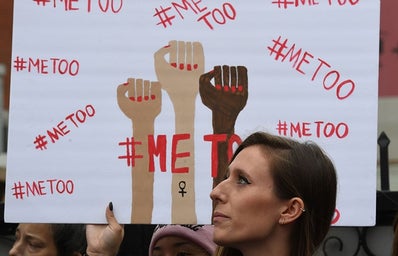TW: rape, sexual assault, violence,
We are witnessing the beginning of the third wave of feminism in the 21st century. To briefly introduce the past waves, the initial wave of feminism, emerging during the late 19th and early 20th century, worked for social change, including concerns on ‘double-standard of sexual morality’ and prostitution, together with women’s voting right and complete political citizenship (Brunskell-Evans, 2015). The second wave in the late 20th century was, according to Brunskell-Evans, a ‘ferment of political activity’, during a period in which the patriarchy restrained and eviscerated women’s sexuality (Greer, 2015, cited in ibid.). In the 1990s, however, feminists raised the concept of the ‘post-feminist’ moment to reveal the irrelevance and old fashion of feminism at that time (Gill 2007, cited in Mendes, Keller, and Ringrose, 2019a, p.1). Yet, despite this, the digital era has reimagined and expanded new forms of feminism and has created diverse feminist communities, including viral hashtags such as #Metoo, #BringBackOurGirls, #YesAllWomen, and #BeenRapedNeverReported; all of which have highlighted the ongoing problem of violence and harassment against girls and women. Such ‘Hashtag Feminism’ uses media innovatively and creatively, allowing women to share personal experiences of sexual assault and abuse to accuse perpetrators and raise awareness. However, is are social media platform platforms really an ideal alternative for feminist activities compared to traditional offline ones? Can girls and women really benefit from posting their voices online?
Female participants can feel supported by positive responses to sharing their experiences online. According to Mendes, Ringrose, and Keller (2019b), who analyzed over 800 blog posts, tweets, and selfies and interviewed 82 female #Metoo participants, most women highlighted being positively encouraged by public responses (Mendes, Ringrose and Keller p.4). One woman for example reported that during the night she posted there were six or seven comments saying ‘we stand with you’ and that she was ‘incredibly strong and brave’ (p.4). Some interviewees even mentioned that the ‘favorites’, retweets, or DMs from strangers can create a feeling of solidarity, which may even transform into a feminist awareness among hashtag participants(p.4), this feeling of solidarity ultimately allows for a greater understanding of the social issues behind sexual violence, and reminds survivors that they are not alone in their experiences. Evidence could also be found in Manikonda’s study, showing that among 620,348 posts from 205489 users on Twitter and 190 posts from 70 users on Reddit, vocabularies regarding ‘fight against harassment and being strong’ ranked 0 and 2 in topic top words respectively during #Metoo movement, suggesting that the entire digital environment is relatively supportive and encouraging (pp.3-4).
Moreover, such experience of talking about such experiences can be essential to healing and moving through the recovery process for survivors. In the research done by McClain and Amar (2013, p.485), all 24 female participants with experiences of childhood sexual abuse expressed positive feelings from talking about the abuse during interviews. They felt that such participation can break the silence surrounding the topic, saying ‘The more I talk, the easier it gets. Accept and integrate the fact that this actually happened to me ’. One interviewee even mentioned that speaking out this experience is ‘like a stepping stone that has made you stronger…you have stepped over it and kept going’. It is also worth mentioning that during their interviews, many women expressed the feeling of helping other children avoid such violence through posting their stories on social platforms to spread knowledge, making their sharing even more meaningful (ibid., p.486). They hoped that telling their experience of being abused would finally help to end the cycle of violence, which in return gives them a sense of purpose and achievement.
Furthermore, involvement in digital feminism may bring participants a sense of solidarity and community to other participants. As pointed out by many participants, the dismissal by people from their everyday lives conflicted with their online welcoming feminist community, where they could freely share feminism insights and seek support from other feminists, with some discussing the contrast with offline friends who made them feel they were too sensitive and just imagining and exaggerating things (Mendes, Ringrose, and Keller, 2019b, p.13). This experience of ‘feeling alone’ in one’s feminist views and feeling upset by institutionalized cultures of sexism amongst friends, family, and colleagues pushes feminists to go online, where they can find similar views and experiences(ibid.) Similarly, after studying over six million posts of members of online social movement organization, Caren et al. (2012, cited in Crossley, 2015, p.255) found that these users always ‘create an identity and a distinct community within their virtual space’ going beyond treatment of social media as a tool for activism.
However, social media can also enable the flourish of misogynist vitriol against feminism, resulting in possible emotional distress among feminists. According to one study, 72 percent of female participants surveyed have encountered hostile responses when posting their statement against rape culture on a social platform, ranging from common or ‘low-level’ comments such as ‘you’re fat’ to spiteful, aggressive, ‘graphic rape’ (sending sexual videos) and ‘death threats’ (Mendes, Ringrose, and Keller, 2019b, p.11). Users have come up with a series of approaches to deal with these comments however, including intentionally avoiding replying to aggressive tweets and obstructing and muting these accounts. Another female participant cooperated with Twitter headquarters and the police to find out a serial troll who was creating different accounts to keep abusing feminists (Mendes, Ringrose, and Keller, 2019b, p.12). Meanwhile, a large number of female-empowering Instagram accounts are created to support and inspire women, such as @makerswomen (Accelerating the women’s movement through stories of real-life experiences), @femalecollective(inspirational quotes about self-love and all kinds of girl power memes and feminist humour), @gurlstalk (Mental health resources & community for gurls to share, listen & support each other), @recipesforselflove and so on. These online communities offer female survivors not only a safe place from misogyny but also productive interactions to get inspired and supported, which ensure that women overall are positively impacted by the digital feminism.
Reference List:
Brunskell-Evans, H. (2015). ‘A Third Wave of Feminism is Rising and Here’s Why We Need to Surf It Now’, The Conversation, 11 November. Available at: https://theconversation.com/a-third-wave-of-feminism-is-rising-and-heres-why-we-need-to-surf-it-now-50432 (Accessed: 11 Jan 2021).
McClain, N., and Amar, A.F. (2013). ‘Female survivors of child sexual abuse: Finding voice through research participation.’ Issues in Mental Health Nursing, 34(7), pp. 482-487. doi:10.3109/01612840.2013.773110.
Mendes, K., Ringrose, J., and Keller, J. (2019b). ‘Metoo and the promise and pitfalls of challenging rape culture through digital feminist activism’. The European Journal of Women’s Studies, 25(2), pp.236-246.
Ringrose, J. (2018). ‘Digital feminist pedagogy and post-truth misogyny’. Teaching in Higher Education, 23(5), pp.647-656.


